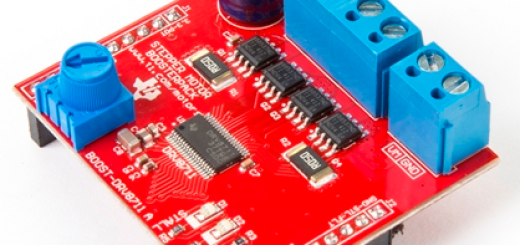The Facts about Multi-site Technology Rollouts
The Facts about Multi-site Technology Rollouts
Article by Concert Technologies
Circuits play an extremely important role in business networks. With industry trends continuing to migrate more and more towards IP-based networks, the importance of the outside connection to the world is greater than ever. And the circuit is the gatekeeper of that connection!
Think of it this way. If there is a problem with the circuit, then the entire site’s connection to everything outside of the location is gone in a flash! That means the loss of money, time and business production until that circuit is working again.
When that happens, how important is the circuit then? And more importantly how important is the technology rollout company’s expertise and ability to test and service the issue at the site level?
3 Key Aspects of Circuit Services
1. Speaking the Language
2. Circuit Testing
3. Monitored Onsite Technicians
1. Speaking the language
FOC date. MPOE. Hard loop. Soft loop. DSX. These are just a few of the terms used when communicating with Carriers, LECs and ISPs. Without this knowledge, it would be like an American in Paris ordering dinner from a waiter who only understands minimal English. It takes you longer to order, you run a high risk of not getting what you asked for and you still have to communicate with them to get your check. Plus don’t forget the tip!
My point is this: if your technology rollout company cannot speak the “circuit language” and effectively communicate to their circuit counterpart, it will ultimately affect the speed of your rollout.
A simple test is to ask your technology rollout company if they know what the following terms mean: B8ZS, ESF or PVCs. Be sure to time them and make sure they aren’t simply Googling it!
2. Circuit Testing Services
Circuits are delivered daily by the gazillions (okay, maybe not quite that many, but there are a lot!). Because of this, occasionally the circuit is “blind accepted” which means that verification of the circuit at the time of install was not completed, but rather was still accepted as not to disrupt the circuit rollout schedule. Thus, when something goes wrong at the time of equipment installation at the site, it can affect your rollout schedule. Not to mention all the finger pointing that occurs to determine whose problem it is. Think of the wasted time that could be used to actually fix the problem!
An experienced technology rollout company has a full suite of circuit testing services and proper equipment readily available. This allows the deployment company to work with the Carriers and LECs to ensure that once their services for the site are complete (whether it be equipment installation, a demarc extension, or other related work), the technology rollout company can then test the circuit all the way through to ensure that everything is working properly.
You’d also be surprised at how often technicians spend time trying to resolve a circuit issue at the end of a demarc extension rather than at the building’s Demarc (demarcation point). Thus, a key to testing a circuit when issues arise is to always go directly to the circuit’s Demarc and test at this point which eliminates all other onsite cabling and equipment issue possibilities. This procedure should be instituted for each site deployment on your rollout schedule.
3. Monitored Onsite Technicians
In order to test the circuit and provide immediate issue rectification, you have to have experienced onsite technicians available to do it. But what is experience? A doctor may be an experienced surgeon, but has not performed a particular procedure. In those cases, what does she do? The answer is simple: she consults with an expert in the procedure and/or has a knowledgeable assistant to help with the operation.
It is the same with onsite rollout technicians. It is simply unrealistic when performing hundreds or thousands of site jobs to expect all technicians employed to know every aspect of the requirements – whether they include installing a specific piece of equipment or performing circuit testing. Each site is a world unto itself and comes with its own unique requirements for project success. Thus, the expertise of the technology rollout company comes into play and accounts for any unexpected issues (think Murphy’s Law!) that may occur during a multi-site nationwide technology rollout.
I have mentioned this in the past and will continue to emphasize it until every man, woman, and child can recite it from heart: the technology rollout company must directly monitor each technician at every site in order to provide sufficient support and guarantee quality assurance. This is called the Direct Tech Communication Channel and it is the most efficient way for the deployment company to ensure the success of your technology rollout.
Conclusion
As it becomes easier to install IP technology in the field, the ability for multiple services to be deployed in a single or minimized number of truck rolls increases as it relates to less than one day deployments (Category 1). And as I’ve stated in the past, fewer truck rolls means lower project costs for you!
Thus, having onsite technicians that are available to not only install equipment, but provide testing and provisioning services for circuits on the site level becomes of even greater importance.
So the next time you’re looking to employ a technology rollout company for your multi-site technology rollout, be sure to check that they have:
1. Experience with Carriers, LECs and ISPs and can speak the “circuit language”
2. A full suite of circuit testing services
3. Direct monitoring capabilities of all onsite field technicians
Circuits play an extremely important role in business networks. With industry trends continuing to migrate more and more towards IP-based networks, the importance of the outside connection to the world is greater than ever. And the circuit is the gatekeeper of that connection!
Guest Post by Arjun



Voice of the people